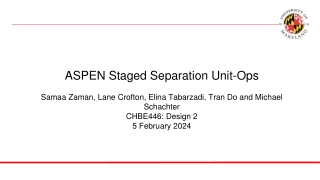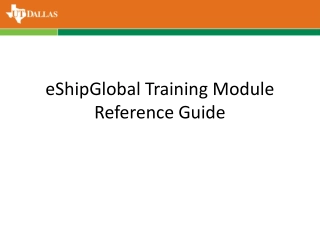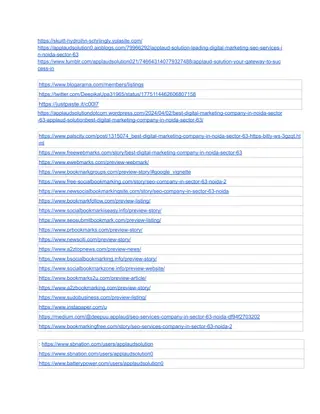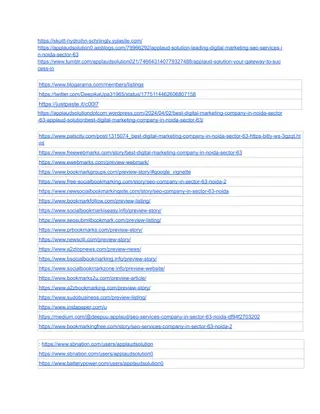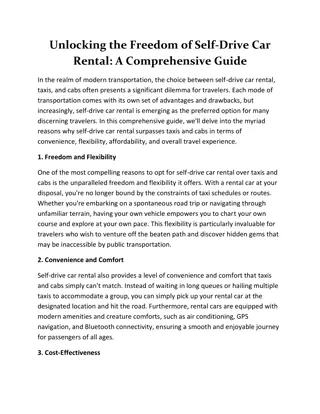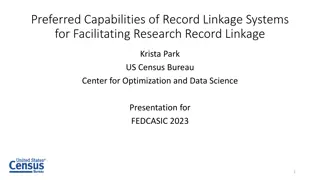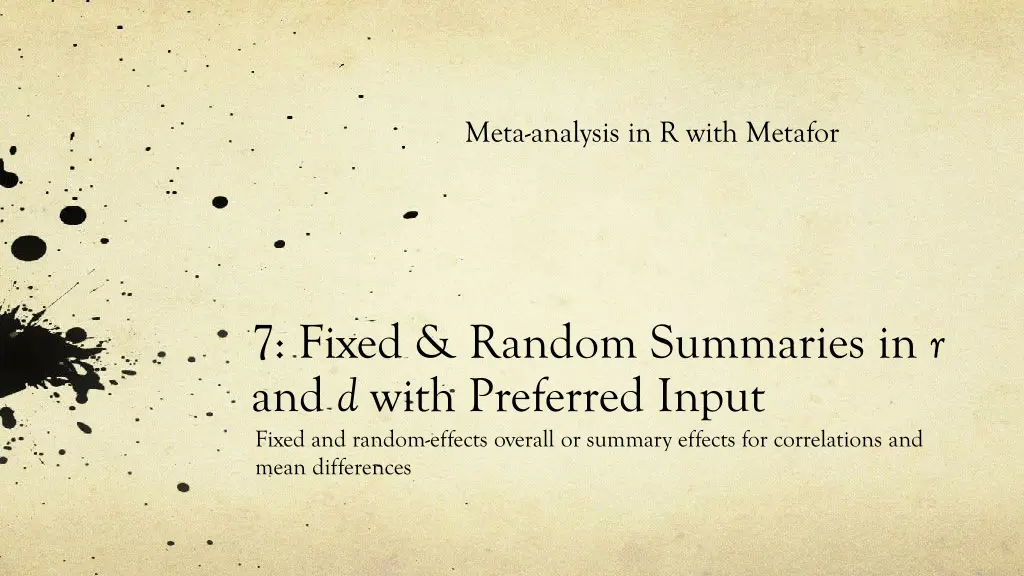
Conducting Meta-analysis in R Using Metafor: Fixed & Random Summaries for Correlations and Mean Differences
Learn how to perform meta-analysis in R using the Metafor package to compute fixed and random effect summaries for correlations and mean differences. Understand the process of combining study effect sizes, specifying analysis type, choosing estimation methods, and handling different effect size transformations. Explore correlation measures and mean differences, accompanied by R code examples and results interpretation.
Download Presentation

Please find below an Image/Link to download the presentation.
The content on the website is provided AS IS for your information and personal use only. It may not be sold, licensed, or shared on other websites without obtaining consent from the author. If you encounter any issues during the download, it is possible that the publisher has removed the file from their server.
You are allowed to download the files provided on this website for personal or commercial use, subject to the condition that they are used lawfully. All files are the property of their respective owners.
The content on the website is provided AS IS for your information and personal use only. It may not be sold, licensed, or shared on other websites without obtaining consent from the author.
E N D
Presentation Transcript
Meta-analysis in R with Metafor 7: Fixed & Random Summaries in r and d with Preferred Input Fixed and random-effects overall or summary effects for correlations and mean differences
Overall Summary The Metafor program uses inverse variance weights to combine study ES into an overall or summary effect size You can specify Fixed (common) effects analysis or Random (varying) effects analysis If RE, you can choose from several methods for estimating the random effects variance component (REVC). Different REVC, weight, summary. Themethodstatement specifies both fixed or random and which REVC estimator you want The effect sizes input to metafor may be transformed in various ways Themeasureoption tells metafor what transformation you want
Correlation Measures If you input r and N, you can choose either the raw correlations or one of two transformations for the analysis using measure = choice command : COR Pearson correlation and associated variance Vtype = LS is the default. The large sample approximation is used for the variance. Vtype = UB provides and unbiased estimate of the sampling variance. UCOR correction for slight bias in Pearson correlation Vtype = LS is the default. The large sample approximation is used for the variance. Vtype = UB provides and unbiased estimate of the sampling variance. ZCOR Fisher s z transformation and associated variance
R code: LMX & AC Rockstuhl, T., Dulebohn, J. H., Ang, S., & Shore, L. M. (2012). Leader member exchange (LMX) and culture: A meta-analysis of correlates of LMX across 23 countries. Journal of Applied Psychology, 97, 1097-1130. doi:10.1037/a0029978 Measure= COR and method = HS Note that choosing the Hunter-Schmidt estimator, Metafor still uses the inverse variance method, and does not produce the same analysis as would following the method in Hunter and Schmidt s 2004 book. Measure = ZCOR and method= DL Note that analysis is in Z and is not transformed back to r. You must do that, and the variance cannot be transformed directly, but the confidence and credibility limits can. Show R code and results
Mean Differences If you use the preferred format (M, SD, N for each group), you can choose measure = choice : MD mean difference (no standardizing for pooled SD) This is not usually feasible because you need exactly the same measurement or scale across all the studies (e.g., if every study compared men to women on the Beck Depression Index) SMD for standardized mean difference The usual choice (e.g., all studies compared men and women on depression, but they used different scales to measure depression)
R code: Appetite study manufactured data Measure= MD , method = DL Measure= SMD , method= DL Measure= SMD , method= REML Show R code and results




